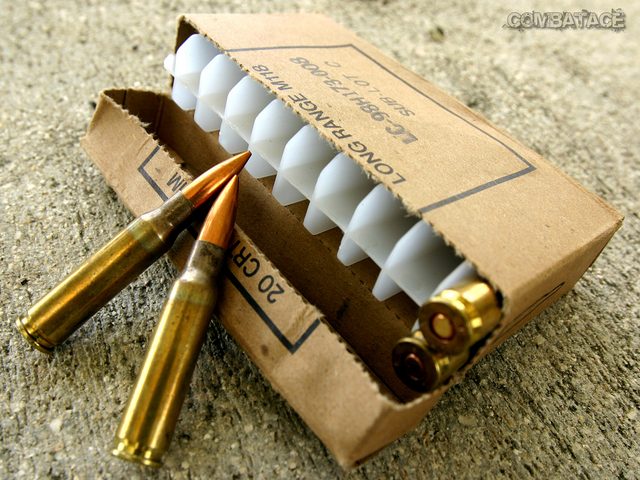-
Content count
6,630 -
Joined
-
Last visited
-
Days Won
31
Content Type
Profiles
Forums
Calendar
Gallery
Downloads
Store
Everything posted by Erik
-
From the album Jodies - Marine Corps Cadence Downloads
Marine Corps Cadence Downloads -
From the album Jodies - Marine Corps Cadence Downloads
Marine Corps Cadence Downloads -
From the album Jodies - Marine Corps Cadence Downloads
Marine Corps Cadence Downloads -
From the album Jodies - Marine Corps Cadence Downloads
Marine Corps Cadence Downloads -
Saudi Arms Deal Advances White House to Notify Congress Soon of $60 Billion Package, Largest Ever for U.S. Source: The Wall Street Journal -- By ADAM ENTOUS The Obama administration is set to notify Congress of plans to offer advanced aircraft to Saudi Arabia worth up to $60 billion, the largest U.S. arms deal ever, and is in talks with the kingdom about potential naval and missile-defense upgrades that could be worth tens of billions of dollars more. The administration plans to tout the $60 billion package as a major job creator—supporting at least 75,000 jobs, according to company estimates—and sees the sale of advanced fighter jets and military helicopters to key Middle Eastern ally Riyadh as part of a broader policy aimed at shoring up Arab allies against Iran. The talks between the U.S. and Saudi Arabia have been widely known for months, but many new details are only now coming into focus. These include the number and type of aircraft involved, how much the Saudis intend to spend in an initial installment, and the ongoing negotiations to also upgrade the kingdom's navy and missile defenses.The $60 billion in fighter jets and helicopters is the top-line amount requested by the Saudis, even though the kingdom is likely to commit initially to buying only about half that amount. In a notification to Congress, expected to be submitted this week or next, the administration will authorize the Saudis to buy as many as 84 new F-15 fighters, upgrade 70 more, and purchase three types of helicopters—70 Apaches, 72 Black Hawks and 36 Little Birds, officials said. The notification triggers a congressional review. Lawmakers could push for changes or seek to impose conditions, and potentially block the deal, though that is not expected. On top of the $60 billion package of fighter jets and helicopters, U.S. officials are discussing a potential $30 billion package to upgrade Saudi Arabia's naval forces. An official described these as "discreet, bilateral conversations" in which no agreement has yet been reached. That deal could include littoral combat ships, surface vessels intended for operations close to shore, the official said. Talks are also underway to expand Saudi Arabia's ballistic-missile defenses. The U.S. is encouraging the Saudis to buy systems known as THAAD—Terminal High Altitude Defense—and to upgrade its Patriot missiles to reduce the threat from Iranian rockets. U.S. officials said it was unclear how much this package would be worth. The U.S. has sought to build up missile defense across the region, and the Saudi package could be similar to one in the United Arab Emirates, officials said. THAAD is built by Lockheed Martin Corp. and Raytheon Co. supplies the system's radar. THAAD is the first system designed to defend against short- and intermediate-range ballistic missiles both inside and outside the Earth's atmosphere. It complements the lower-aimed Patriot missile defense system, providing a layered defense. Lockheed officials have stated that they see serious export potential for the system in the Middle East, where a major concern exists about Iran's ballistic missile development. The prospect for job growth could help build support in Congress for the $60 billion package, officials said. "It's a big economic sale for the U.S. and the argument is that it is better to create jobs here than in Europe," said one person close to the talks. Boeing Co., which makes the F-15s, the Apaches and the Little Birds, believes the Saudi package would directly or indirectly support 77,000 jobs across 44 states. It is unclear how many jobs, if any, would be supported by the Saudi purchase of Black Hawks, made by Sikorsky. Production levels are already high at Sikorsky, which is owned by United Technologies Co. The Saudis in recent years have broadened their acquisitions to include more European- and Russian-made weaponry. That thinking was partially behind Riyadh's 2007 deal to purchase dozens of Eurofighter fighter planes from BAE Systems PLC, Saudi officials said. Pro-Israel lawmakers have voiced concerns in the past about arms sales to Saudi Arabia that they say may undercut Israel's military edge and provide support to a government with a poor human rights record. U.S. officials say the Israelis are increasingly comfortable with the Saudi sale because the planes won't have certain long-range weapons systems. Also, the Israelis are in line to buy a more advanced fighter, the F-35, and should begin to receive them around the same time the Saudis are expected to start getting the F-15s. "We appreciate the administration's efforts to maintain Israel's qualitative military edge, and we expect to continue to discuss our concerns with the administration about the issues," said Michael Oren, the Israeli ambassador to the U.S. The senior U.S. defense official said it was unclear what pieces of equipment in the $60 billion package the Saudis may decide not to purchase, but he described the F-15s as a priority item. "It's conceivable that the Saudis could come back for the whole $60 billion," the official said, but added, "They're balancing their own defense priorities." The $60 billion deal will be stretched out over five to 10 years, depending on production schedules, training, and infrastructure improvements, officials said. Anthony Cordesman, a scholar at the Center for Strategic and International Studies, said the deal is so large and so complex, that changes are inevitable. "The actual contract often is renegotiated because the Saudis are always going to push, we're always going to push, the Congress is going to push, the manufacturer is going to push. This is not the kind of negotiation where you've really agreed on the final details until you actually have put the final contract out," he said. —Nathan Hodge contributed to this article. Source: The Wall Street Journal Image: Associated Press -- Blackhawk UH-60 helicopters, such as these flown in South Korean military exercises last winter, are part of a proposed arms sale to Saudi Arabia.
-
Australia, China inspect fighter jets The Sydney Morning Herald -- September 13, 2010 - 6:29PM Australia and China have played show-and-tell with their jet fighter aircraft ... in a gesture of transparency. Defence head Air Chief Marshal Angus Houston said it underlined the Australian Defence Force's good relationship with China's defence force, the People's Liberation Army (PLA) - one not shared by the Americans. He said it was a reciprocal arrangement. When PLA chief of the general staff General Chen Bingde visited Australia last year, he was allowed to inspect one of our jet aircraft. Just what type of aircraft wasn't specified. "When the chief of the air force went up to China, he was given what I would say reciprocal access to a fighter aircraft in the same way as we had provided access to that fighter aircraft for General Chen Bingde," Air Chief Marshal Houston told reporters on Monday. "We thought that was a very positive step and it's typical of the constructive approach we both share." General Chen was in Australia for the annual Australia-China strategic dialogue and another is to be held soon. Air Chief Marshal Houston said one topic of discussion last year was China's military buildup. "We seek to better understand the reason for that buildup and we impress on our Chinese friends the need to be transparent about their intent in terms of that buildup," he said. Air Chief Marshal Houston said engagement was absolutely the way to go and much of Australia's current prosperity stemmed from China's growth. "We would love to see our American friends who at the moment are having some difficulties with military to military relationship with China, re-establish those vital engagement links between the two militaries. That way the US and Chinese militaries could discuss and negotiate issues of common concern, he said. Air Chief Marshal Houston said it was really up to the US and Chinese militaries to get together and the signs at the moment were quite good. "If we can help with the re-establishment of links, fine," he said. The Sydney Morning Herald
-
In SimGolf you'd play as a course owner, developer, manager. In Greens Keeper you'd play as a more challenging role of support staff. It adds that extra edge needed to make it more alluring.
-
They all miss the boat when it comes to the ultimate simulation game. I thought of this brilliant idea a couple years ago. Greens Keeper - A golf course greens simulation. - Design your own golf course or play from a list of courses from around the world. - Build your skills and equipment inventory to oversee increasingly challenging courses. - Start with a push mower and with course profits purchase upgrades and new mowers. - Timely reseed courses to keep them green and adjust their water and nutrients. - Plants and shrubs mature, die, and need replanting. - Replace course divots, rake the sand traps, and trim the shrubs. - Build your empire and hire support staff to help you. - Course popularity is determined on the job you do and increases profits. - Deal with unruly golf pros, club house staff, and course managers. - Manage your assets to keep the course facilities and grounds clean. - Stock and manage the water hazards or put on SCUBA gear and dive for lost golf balls. - Manage threats from wildlife, patrons, and rodents destroying your course. - Natural disasters from hurricanes, tornadoes, hail, drought, flooding, and insects. - Drive the ball collector on the driving range or watch the golfers by driving the booze cart. - And much more. This documents my idea and creation and I reserve all intellectual and artists rights. I will accept offers to produce this heralding new simulaton. My rights can be licensed for a standard 10% of the net profit.
-
What? What? Thirty-five? Happy Birthday!
-
Homes on fire after explosion reported in California SAN BRUNO, Calif. — A massive fire is roaring through a mostly residential neighborhood in the San Francisco suburb of San Bruno. Firefighters from San Bruno and surrounding cities are battling the blaze that started on a hillside and is now consuming homes in a residential neighborhood. Television live shots show at least a dozen homes destroyed, with flames reaching now as high as 50 to 60 feet into the air. A South San Francisco fire official confirmed earlier that firefighters were responding to a fire, but had no other details. Witnesses say a loud explosion was felt just before the flames erupted around 6 p.m. Thursday. The fire is burning in a mostly residential area a few miles from San Francisco International Air, but the Federal Aviation Administration and a spokesman for the airport say they have no record of a plane crash. THIS IS A BREAKING NEWS UPDATE. Check back soon for further information. AP's earlier story is below. SAN BRUNO, Calif. (AP) — Live television footage is showing flames shooting at least 20 feet high into the air and burning homes in a San Francisco suburb. A South San Francisco fire official confirmed Thursday evening that firefighters were responding to a blaze in San Bruno, but had no other details. Witnesses say a loud explosion was felt just before the flames erupted around 6 p.m. Thursday. The area where the fire is burning is in a mostly residential neighborhood. Chron
-
First Flight for New HELLFIRE II Missile Design Lockheed Martin ORLANDO, Fla: Lockheed Martin's new multi-functional AGM-114R Hellfire II missile scored a direct hit during its first proof-of-principle (POP) flight test recently at Eglin Air Force Base, FL. The Hellfire II design, now entering the qualification phase, features a new multi-purpose warhead that enables a single missile to cover all of the target sets of the current laser-guided Hellfire II variants. The POP 1 flight test featured a lock-on-before-launch engagement of a stationary target board at 3.2 miles (5.1 km). The team used a ground-based laser designator to illuminate the target. The inert missile, which was ground-launched, was equipped with an enhanced telemetry package. In addition to proving out the new components and software, the flight also verified backward compatibility with Hellfire II platforms that cannot provide targeting information to the missile. "The multi-functional Hellfire II missile is one missile for many missions," said Ken Musculus, director of Air-to-Ground Missile systems Programs at Lockheed Martin Missiles and Fire Control. "Its multi-functional warhead enables the AGM-114R to neutralize a broad set of targets previously covered by four different warhead models - everything from armor and air defense systems to patrol boats and enemy combatants in SUVs or caves. Warfighters won't have to decide ahead of time what they might encounter and load the appropriate combination of missiles; with the multi-functional Hellfire II, they can meet many contingencies with a single missile." Prior to the first POP flight test, Lockheed Martin completed a battery of warhead tests, including 10 precursor warhead tests, four main warhead tests and five tests of tandem warheads within the Hellfire guidance section. The next two POP flight tests, scheduled for early next year, will feature live warheads. "This new Hellfire II can be fired from both rotary-wing and unmanned platforms," Musculus said. "A new inertial measurement unit enables properly equipped platforms to launch missiles at targets behind them without first having to turn the aircraft around. Getting the missile on target that much quicker gives the enemy less time to react or escape." Musculus said many of the new improvements are software-driven. "We've replaced a host of circuit boards, transistors and other hardware components with software," he added. "Turning hardware into software contributes to the modular design of the missile and offers an efficient path to future upgrades." With more than 25,000 rounds produced for the U.S. and 14 international customers, Hellfire II has been successfully integrated with attack helicopters in the U.S. and many Allied fleets. It is also capable of surface launch from ground vehicles, tripods and small vessels. More than 10,000 Hellfire missiles have been successfully fired in combat. Lockheed Martin
-

Eliminate co-pilots to save cash, says Ryanair CEO
Erik replied to Dave's topic in Military and General Aviation
Publicity stunt. Next he'll eliminate all non-essential hardware aka the plane. Tickets will now include a one way sling-shot ride to your destination. The upsides include: No worry, no hassle, anytime use bathrooms. ZIP UR-IN. Guaranteed no extra baggage fees. If the ride doesn't kill you that 200 pound suitcase you are carrying will. No long waits at security check points and scanning. Go ahead bring some C4. Got matches? Oh look fireworks! No charge aerobic workout program included. Want more hang-time, flap harder. RyanAir we spare no expense at finding expenses to spare. -

Video Game Pulled Globally From Military Stores Over Taliban Inclusion
Erik replied to FastCargo's topic in CombatACE News
Simple. Out of respect for the lives that were lost fighting against such forces. It has been mentioned that this is not about banning or preventing the purchase of a game where you can play from the opposition's POV. This is about not making a mockery of the blood that has been shed by our armed forces. As an American I not only understand but I support the decision 200%. [ Take a moment to remember someone who lost their life for this country. ] [ Pause ] [ Thank you.] -
Luckily the chances of a wind turbine squawking an ident have been fairly rare. :Controller: Unknown windmill north east of the field, Fairbanks Approach, IFR cancelled, contact tower on one one two point niner zero, good day.
-
Absolutely deliberate. You don't put that many hours in a big girl like that and not know when she's not coming back.
-

Upload question
Erik replied to amariani's topic in Thirdwire: Strike Fighters 2 Series - General Discussion
Nichts zu danken. -
Well my point exactly and I'm not saying I'd like to punch out of a 47 ahead of those big fans but it's a strong argument for a decent evac plan on cargo birds.
-

Upload question
Erik replied to amariani's topic in Thirdwire: Strike Fighters 2 Series - General Discussion
Click the Downloads Link in the menu bar above. On the main downloads page toward the top just above the category listings you'll see a button to upload. http://combatace.com/index.php?app=downloads&module=post§ion=submit&c= Looks like this, link above. -
Tragedy. Way too early to speculate on anything but the dubious smoke in the cabin and loss of avionics both forward are not good signs. The high approach leaves you to wonder if they weren't seeing three green down and locked with their tanks full of fuel. Definitely a lot to manage even for two very experienced 47 drivers. Usually when things go wrong in such a redundant platform they're unrecoverable. Makes me always wonder why the SOP for a two crew bird with no passengers wouldn't have been to punch out while putting the aircraft into the Persian Gulf. FC what's Fred's policy? E
-
Lased and Confused: Off-the-Shelf Infrared Lasers Could Ward Off Missile Attacks on Military Helicopters Scientific American -- By Charles Choi A newly developed broad-spectrum laser mounted on choppers could effectively dazzle shoulder-launched antiaircraft weapons in flight, and prevent them from finding and destroying their targets. Helicopter-mounted lasers that can dazzle and defend against heat-seeking missiles are now under development, researchers reveal. The military often relies heavily on helicopters in areas such as Afghanistan, where rough terrain can make it hard for airplanes to land and for troops and vehicles to travel on the ground. However, as the Soviet Union discovered in the 1980s during their war there, copters are easy targets for enemies with shoulder-launched missiles, "and now, unfortunately, the U.S. is on the other side with Afghanistan," says Mohammed Islam, a laser and fiber-optics scientist at the University of Michigan at Ann Arbor. "To consider the magnitude of the problem, there are about 3,000 helicopters in the U.S. armed forces." Islam and his colleagues are now devising a way to protect helicopters from such attacks using off-the-shelf lasers. The missiles normally home in on aircraft by targeting the infrared radiation given off by the latters' engines; the lasers jam the sensors on these heat-seekers from up to three kilometers away by shining infrared beams at them, buying the helicopters enough time to maneuver away. Most lasers emit just one wavelength, or color. To deflect missiles, the researchers are employing what are known as mid-infrared supercontinuum lasers, or MISCLs, that give off a much broader range of wavelengths—from the visible (800 nanometers) to the mid-infrared (4.5-microns). (A nanometer is one billionth of a meter; A micron is one millionth of a meter.) Because these lasers emit such a broad spectrum, they inundate the opposing sensors with all the infrared wavelengths the missile might look for; any attempts by opponents to block these dazzling rays by painting reflective or absorptive coatings on the missile beforehand would also blind its sensors to the same wavelengths from the copter engine. Less than 10 percent of the light from the laser is a visible dim red; the rest falls within the infrared range. Altogether, the latest version of the device packs about 10 watts of power concentrated into a searing beam. "People who put their hands in its beam quickly move the hand away," Islam says. The new laser uses technology from the telecommunications industry, which relies on multiple wavelength lasers to create many highway lanes for data signals to travel within fiber optics. "It's a clever way of using lasers that you can essentially buy off the shelf," said laser scientist Anthony Johnson at the University of Maryland, Baltimore County, who did not take part in this research. Laser-based defenses have already found their way onto some aircraft, but the laser optics in these systems can currently have up to 84 moving pieces—precision components that can easily get knocked out of alignment by the rumbling on a copter. "Our lasers have no moving parts, which means they can withstand a helicopter's shake, rattle and roll," Islam explains. The hope is to replace the lasers in existing aircraft antimissile defense systems that detect and train beams on their targets. The system is being commercialized through Islam's company, Omni Sciences. In terms of weight current laser-based aircraft antimissile defense systems weigh on the order of 16 kilograms, whereas this new laser is more in the 4.5-kilogram range. When it comes to cost, "for our next prototypes, we'll probably have the parts cost $25,000 to $30,000, and with the packaging and testing we could probably sell it profitably for $100,000," Islam says. In comparison, laser-based aircraft defense systems today cost roughly $1 million, he explains. The researchers developed a first-generation, DVD player–size prototype for the U.S. Army in 2008, and are working on a second-generation, laptop-size device for 2011 that is four times more powerful. Although Islam says that helicopters probably face the greatest need for such laser-based protection against missiles, "it's potentially applicable to all aircraft," he suggests. Islam says the laser could also aid in border surveillance—the chemicals involved in explosives often emit specific light wavelengths when hit by infrared rays, which means these lasers might be able to detect guns and bombs from afar. "You could put them maybe a kilometer or two apart at borders to monitor someone passing, instead of having a border patrol agent every 60 feet," he says. Scientific American
-
F-22 Raptor fleet consolidated Examiner -- By Pierre A. Kandorfer The US Air Force is in the process of redistributing the F-22 flight squadrons. The Secretary of the Air Force and the chief of staff of the Air Force determined the most effective basing for the F-22. This requires redistributing aircraft from one F-22 squadron to units at four F-22 bases. A second squadron will be relocated to an existing F-22 base. The affected Air Force bases are: • Holloman Air Force Base, N.M.: Deactivate one squadron of F-22s and disperse that squadron's aircraft to other F-22 units. Relocate the remaining squadron to Tyndall Air Force Base, Fla. • Elmendorf Air Force Base, Alaska - receive six additional aircraft • Langley Air Force Base, Va. - receive six additional aircraft • Nellis Air Force Base, Nev. - receive two additional aircraft • Tyndall Air Force Base, Fla. - receive one additional squadron "This plan maximizes combat aircraft and squadrons available for contingencies," said Kathleen Ferguson, deputy assistant secretary for installations. "By consolidating aircraft at existing bases, F-22 operational flexibility is enhanced." Several teams surveyed four F-22 bases, evaluating them for feasibility, timing, cost, and planning purposes to accept additional F-22 aircraft. The secretary of the Air Force and the chief of staff of the Air Force carefully considered the site survey results and military judgment factors in making these basing determinations. These actions will be finalized subject to completion of appropriate environmental analysis. The F-22 Raptor combines stealth, super-cruise, maneuverability, and integrated avionics, coupled with improved supportability, and represents an exponential leap in war-fighting capabilities. Examiner
-
C-5 Becomes A ‘Superstar’ Lockheed Martin MARIETTA, Ga., September 2nd, 2010 -- Another Lockheed Martin [NYSE: LMT] C-5 is being transformed into the world’s most capable strategic airlifter, the C-5M Super Galaxy. With more than 70 improvements, the Super Galaxy is rapidly becoming the linchpin of success in achieving global reach. The next C-5M Super Galaxy will be delivered on Sept. 30, 2010 and will be stationed at Dover Air Force Base, Del. The C-5M Super Galaxy recently achieved a 96 percent departure reliability rate while delivering critical cargo to troops in Afghanistan and was called upon to carry the 7.5-ton Alpha Magnetic Spectrometer to be launched on the last space shuttle flight next year. Lockheed Martin






